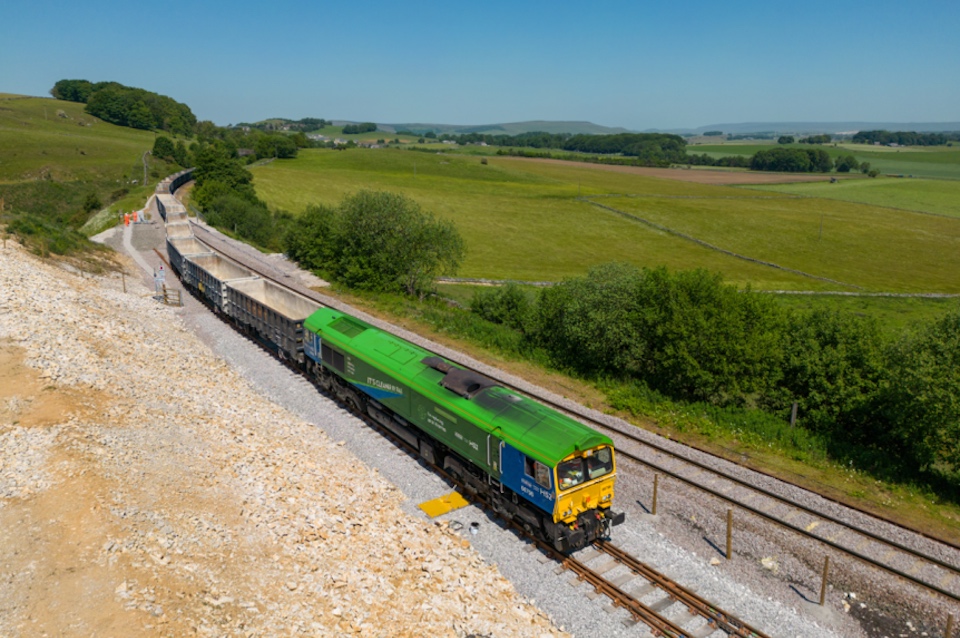Britain’s infrastructure agency, Network Rail, has put the numbers up for rail freight. According to the agency, rail freight contributes billions to the UK economy annually, while keeping supermarkets stocked, builders building, and medicine moving.
The study of the rail freight sector is not a vanity project. The outgoing and incoming UK governments have both mandated an ambitious growth target for rail freight. Network Rail has committed to supporting rail freight growth by eight per cent annually, over the next five years. This will help reach the government target set in 2023 to grow rail freight by three quarters, or 75 per cent, by 2050.
Changing profile of commerce and economic activity
The government-mandated growth in the rail freight industry has been criticised in some quarters as quite timid. Other observers have called for a far greater growth in the industry. However, the reality is that measuring growth is not as simple as that. Building weight (net tonnage moved) is impacted by the cargo carried. One obvious example would be the demise of coal traffic, which no longer plays a significant part in the UK economy, representing a reduction in traffic that other bulk cargo may struggle to match.
“We’re committed to accelerating the shift to rail over the next five years and beyond because of freight’s environmental, social and economic benefits,” says Network Rail’s report. The agency emphasises that the changing profile of commerce and economic activity in the UK is something that rail freight can support, as long as the rial industry evolves with equal alacrity.
Value of rail freight inexorably rising
Meeting the so-called “Net Zero” ambitions, which are embedded in UK law, requires the sector to grow by that figure of at least eight per cent over the next five years. This will help reach the government target set in 2023 to grow rail freight by 75 per cent by 2050. “Growing the rail freight industry is an important part of our plans to cut our carbon to achieve a net-zero emissions railway by 2045 in Scotland and by 2050 in the rest of Britain,” says the report.

Figures provided by the Office of Rail and Road show that 69 million tonnes of rail freight were carried on Britain’s railway in the year ending Thursday, 31 March 2024. The regulator of the industry says this amounts to goods worth about £25 billion (€29.25 billion). If one thing is certain, the value of goods carried by rail is inexorably rising. By that measure, growth targets will easily be met.
25 new movements a day
However, other factors in the national economic plan could also significantly impact rail freight. The whole five-year growth cycle will coincide with the term of the new Labour government, elected earlier this month. That new left-wing government has mandated a huge house-building programme, committing the UK to 1.5 million new homes in England alone. That could be a significant factor for rail freight.

Network Rail calculates that each freight train can transport enough construction materials to build 30 houses. If all that new building were to take place, and all the materials found their way onto a freight train at some point, then the total traffic would exceed even the huge commitment to rail freight made by the vast HS2 high-speed rail project. Breaking down the figures, the house-building target could equate to around 25 new movements a day on a present activity of around 600 trains. “Building materials are among the top commodities rail freight transports in Britain,” notes Network Rail. “We’re committed to supporting this further. Our recent masterplan for regenerating land at Bow Goods Yard in East London involves plans for transforming the area to move even more construction materials by rail.”
Rail freight industry is as relevant today as ever
The hidden economic benefit of rail freight lies in the geographical spread of activity. Bringing growth to the economically underachieving areas emphasises the value of the sector’s £2.45 billion annual contribution. Industry body Rail Delivery Group says freight offers opportunities for careers and communities beyond London and the South East, with a strong presence in Scotland, Wales and the North of England. “Ninety per cent of the economic and social benefits rail freight is outside of London and the South East in 2021,” according to Rail Delivery Group.
The rail freight industry is often accused of fanning its own fire and promoting its own achievements. However, Network Rail’s report places the rail freight industry in the spotlight as part of a wider examination of the UK economy. In the face of other sophisticated lobby groups, rail could equally be accused of underplaying its contribution. Freight carried by rail may be historically low by some measures, but in terms of its economic impact, the industry is as relevant today as ever it was.